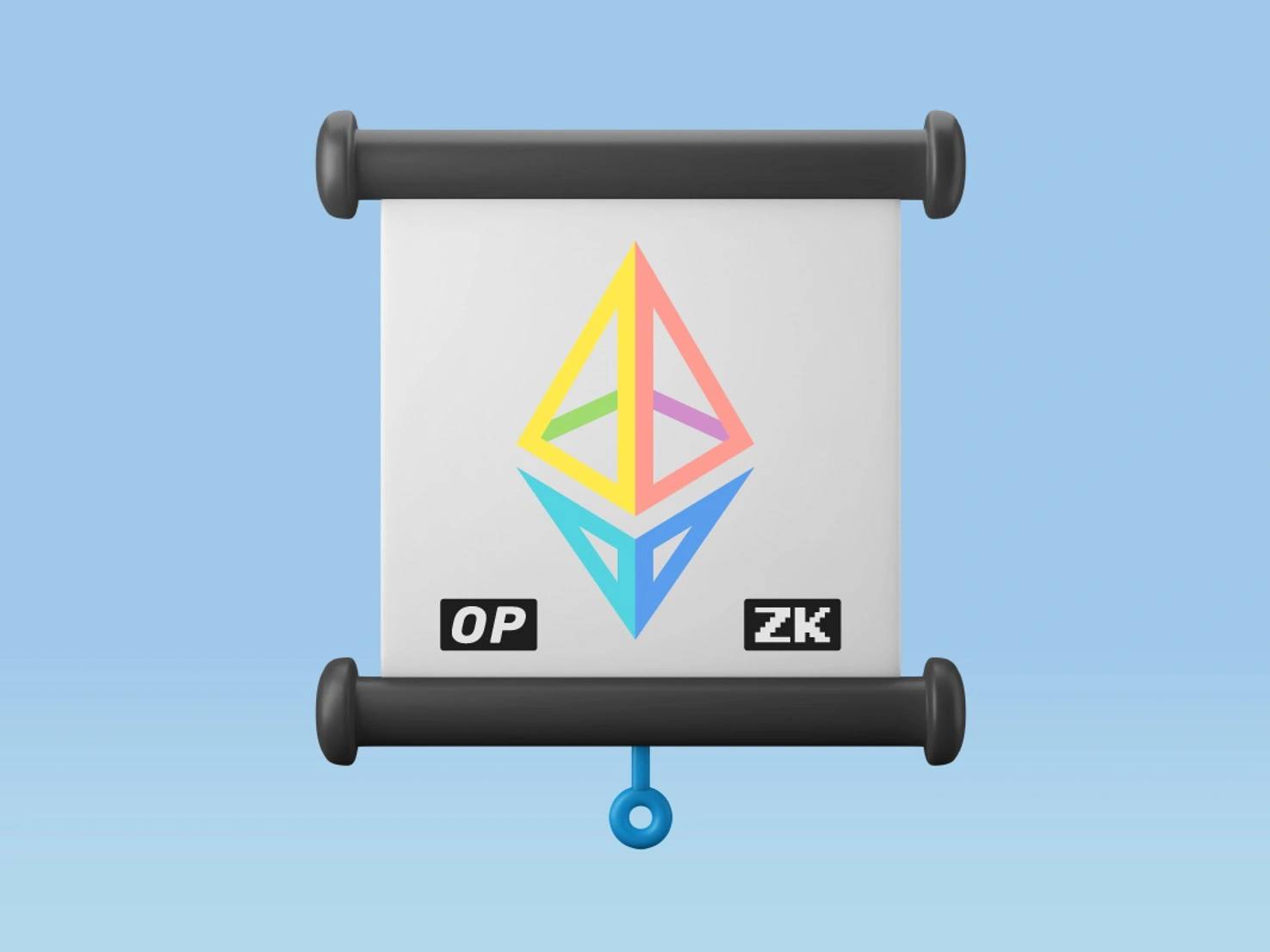위키 구독하기
Share wiki
Bookmark
Rollup
에이전트 토큰화 플랫폼 (ATP):에이전트 개발 키트(ADK)로 자율 에이전트 구축
Rollup
**롤업(Rollup)**은 이더리움(Ethereum)의 확장성, 속도 및 트랜잭션 비용 문제를 해결하도록 설계된 트랜잭션을 수행하는 오프체인 방식입니다. 이더리움 메인 네트워크 외부에서 트랜잭션을 처리하고 집계된 결과만 메인 네트워크로 다시 전송합니다. [1]
롤업은 메인 블록체인(blockchain)에 여러 트랜잭션을 단일 트랜잭션으로 번들링하고 기록하여 온체인에 저장되는 데이터 양을 줄이고 전체 트랜잭션 처리량과 효율성을 높이는 2계층(Layer 2) 확장 솔루션의 한 유형입니다. [2][3]
개요
롤업은 이더리움(Ethereum) 프로토콜로, 메인 체인 외부에서 트랜잭션 실행을 처리하고 트랜잭션 데이터를 주요 네트워크로 다시 전송하여 속도를 높이고 비용을 낮춥니다. 혼잡으로 인해 높은 가스(gas) 수수료 문제에 직면한 이더리움 블록체인(blockchain)에 대한 확장 솔루션을 제공합니다. 롤업은 데이터 크기를 줄이고 트랜잭션을 번들링하여 보다 효율적인 트랜잭션 처리 및 저장을 통해 많은 블록체인이 직면하는 문제를 해결하는 것을 목표로 합니다. [4][5][6]
구현
롤업은 이더리움의 확장성 문제를 해결하기 위해 여러 가지 방법으로 구현될 수 있습니다. 롤업의 두 가지 주요 유형은 낙관적 롤업(optimistic)과 영지식(ZK) 롤업입니다. [4]
낙관적 롤업
낙관적 롤업(Optimistic Rollup)은 잘못된 트랜잭션을 감지하기 위한 분쟁 해결 메커니즘으로 기능합니다. 이더리움 네트워크에 제출된 트랜잭션 데이터가 정확하고 유효한지 확인합니다. 낙관적 롤업은 여러 오프체인 트랜잭션을 큰 배치로 번들링하여 이더리움 네트워크에 하나의 트랜잭션으로 제출합니다. 결과적으로 대부분의 2계층(Layer 2) 네트워크는 네트워크 처리량을 높이기 위해 이 롤업 구현에 의존합니다. [4][9]
낙관적 롤업의 주요 기능은 이더리움 블록체인에서 트랜잭션 데이터를 검증하는 것입니다. 잘못된 트랜잭션이 있으면 시스템이 이를 식별하고 정확한 상태를 복구하며 해당 트랜잭션을 제출한 당사자에게 페널티를 부과합니다. 낙관적 롤업이 작동하는 분쟁 해결 시스템은 사기 증명을 검증하고, 사기성 트랜잭션을 감지하며, 잘못된 사기 증명이나 잘못된 트랜잭션을 이더리움 네트워크에 제출하는 악의적인 행위자를 억제하는 것입니다. 불법 트랜잭션을 식별하는 사기 증명 메커니즘에는 일반적으로 검증자와 실행자 두 당사자가 관련됩니다. 두 당사자 모두 담보로 코인을 스테이킹할 수 있으며, 트랜잭션이 사기성이거나 검증자가 잘못된 경우 코인을 잃게 됩니다. 사기성 주장은 최대 1주일 동안 낙관적 롤업에서 처리될 수 있습니다. [3][8][10]
영지식(ZK) 롤업
ZK 롤업(ZK Rollup)은 수백 개의 오프체인 트랜잭션을 번들링하고 해당 유효성을 인증하는 암호화 증명을 제공합니다. 유효성 증명을 사용하여 처리된 트랜잭션의 정확성을 확인하고 최소한의 요약 데이터를 메인넷(mainnet)에 제출합니다. 두 가지 유형의 ZK 롤업이 있습니다. [2][8][11]
- zk SNARK(Zero-Knowledge Succinct Non-Interactive Argument of Knowledge)는 검증자와 증명자가 특정 롤업의 모든 트랜잭션을 거쳐 오프체인에서 트랜잭션을 검증합니다.
- zk STARK(Zero-Knowledge Scalable Transparent Argument of Knowledge)는 트랜잭션을 번들링하고, 오프체인에서 트랜잭션을 검증하고, 유효성 증명을 생성하고, 이더리움 메인넷(mainnet)에 제출하는 방식으로 zk SNARK와 유사하게 작동합니다.
낙관적 롤업과 ZK 롤업의 차이점
낙관적 롤업(Optimistic Rollup)과 ZK 롤업(ZK Rollup)은 모두 오프체인에서 작동하고 이더리움(Ethereum) 네트워크를 확장하지만 여러 가지 면에서 다릅니다. [6][12]
| 낙관적 롤업 | ZK 롤업 | |
|---|---|---|
| 트랜잭션 검증 | "사기 증명"을 사용하여 트랜잭션의 유효성을 증명하고 불법적인 트랜잭션을 식별합니다. | "유효성 증명"을 사용하여 처리된 트랜잭션의 정확성을 검증합니다. |
| 유효성 증명 | 유효성 증명은 온체인에 게시되지 않습니다 | 유효성 증명은 온체인에 게시됩니다 |
| 트랜잭션 확정성 | 트랜잭션을 완료하는 데 약 1주일이 걸립니다. | 트랜잭션은 즉시 이루어집니다. 즉, 트랜잭션에 지연이 없습니다. |
| 트랜잭션 비용 | 비용이 더 낮습니다 | 비용이 더 높습니다 |
잘못된 내용이 있나요?
